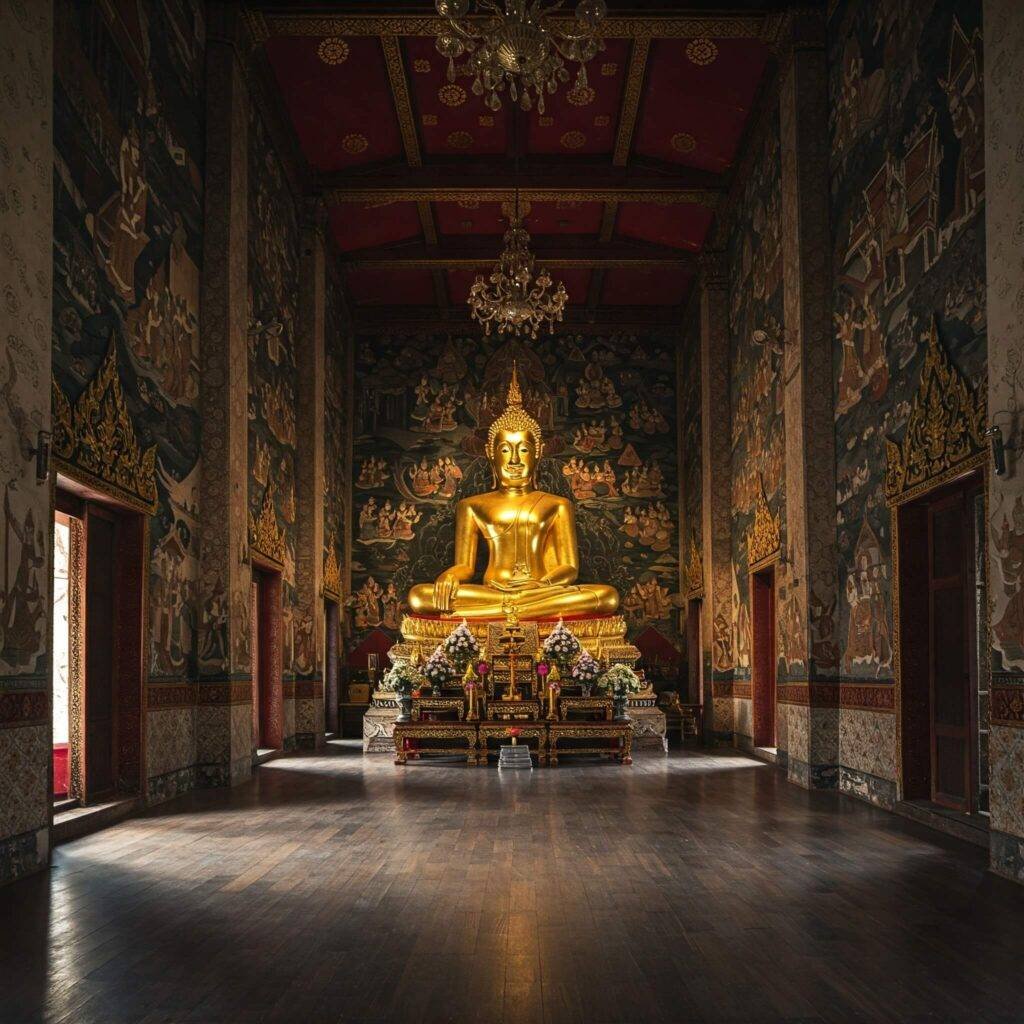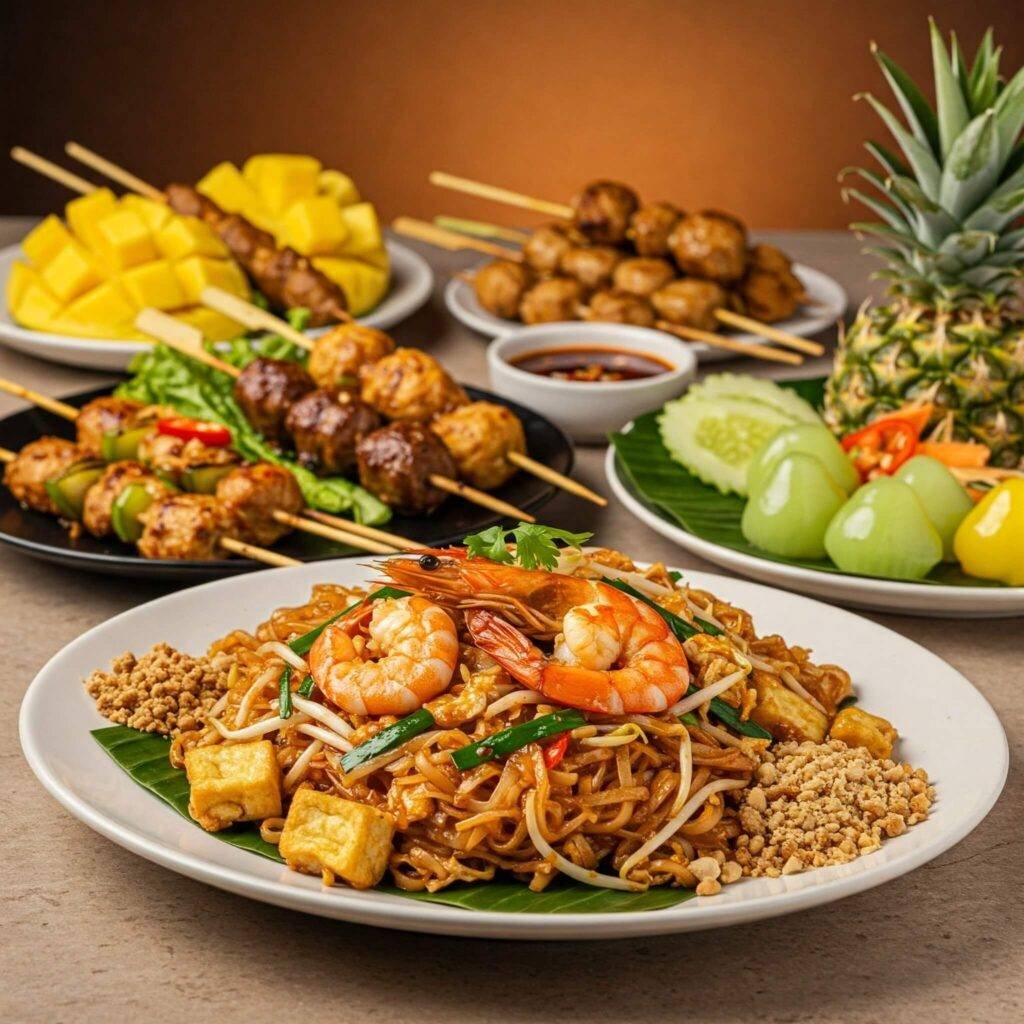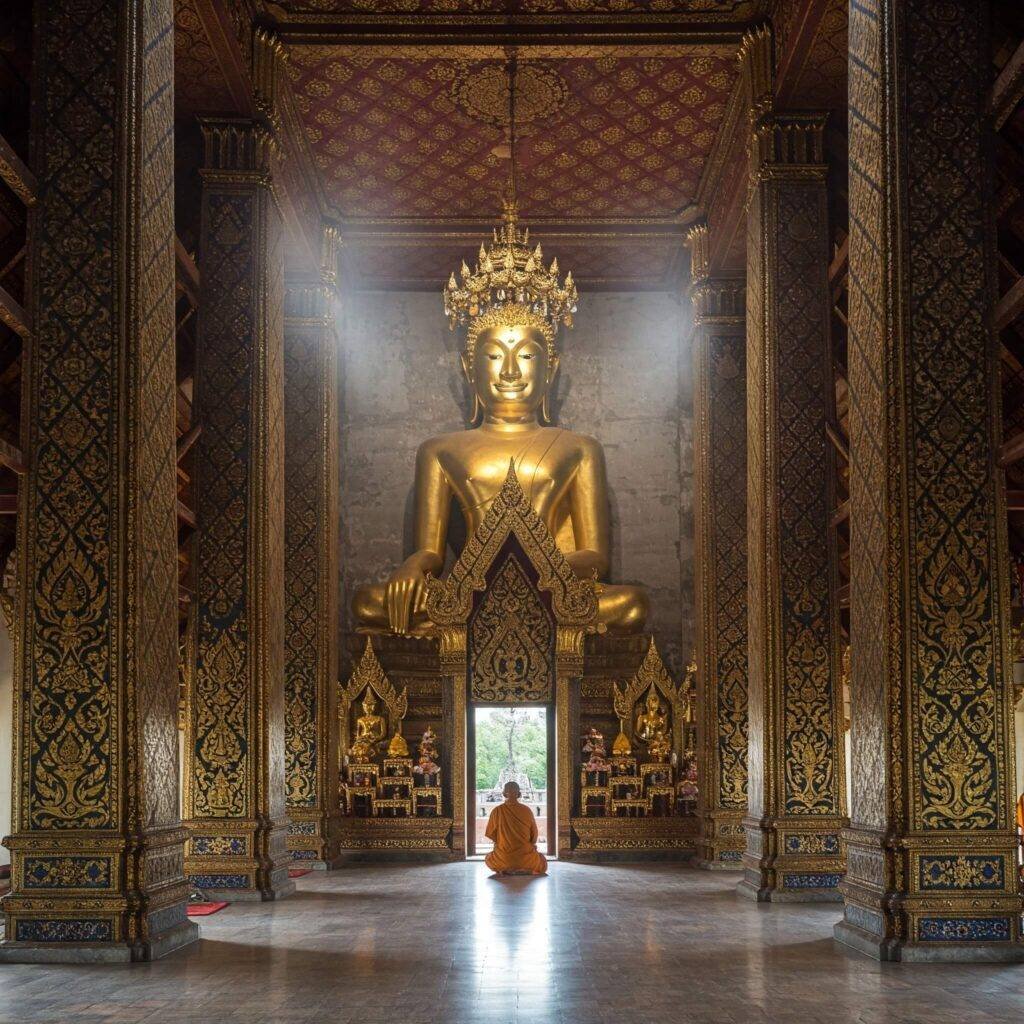Thailand. The name alone conjures images of shimmering temples, bustling street markets, lush green jungles, and stunning white-sand beaches. It’s a land of vibrant culture, incredible food, and warm smiles, drawing millions of travelers every year. If you’re dreaming of visiting the ‘Land of Smiles,’ you’re in for an unforgettable adventure. However, like any international journey, a little preparation goes a long way. This Thailand Travel Guide is designed to give you the essential information you need before you even step on the plane, ensuring your trip is as smooth, enjoyable, and safe as possible. Think of this as your ultimate “What to Know Before You Go” checklist!
Getting Started: Essential Thailand Travel Guide Planning Steps
Embarking on your adventure requires laying the groundwork. Proper planning is key to maximizing your experience when visiting Thailand.
When is the Best Time to Visit Thailand?
Timing is everything when planning your Thailand travel guide. Thailand generally has three main seasons:
- Cool Season (November to February): This is the most popular time to visit, with pleasant temperatures, especially in the north. Perfect for exploring cities and ancient ruins. Expect higher prices and larger crowds.
- Hot Season (March to June): Temperatures soar, particularly in April. Ideal for beach holidays but can be uncomfortable for extensive sightseeing elsewhere.
- Rainy Season (July to October): Characterized by short, intense showers, usually in the afternoon. Doesn’t rain all day, every day. Offers fewer crowds, lower prices, and lush landscapes. Southern islands might have rougher seas.
Choosing the best time depends on your priorities – weather, budget, and crowd tolerance.
Thailand Travel Guide: Visa Requirements
Visa rules vary greatly depending on your nationality and the length of your stay.
- Many nationalities, including those from the US, UK, Canada, and most EU countries, can enter Thailand for up to 30 days under a visa exemption program when arriving by air. Land border crossings often grant shorter stays (usually 15 days).
- If you plan to stay longer or are not eligible for the exemption, you’ll need to apply for a visa before you travel. The most common is the 60-day tourist visa.
Always check the latest requirements with your local Thai embassy or consulate well in advance of your trip. [Outbound Link: Official Thailand Ministry of Foreign Affairs Visa Information]
Budgeting for Your Thailand Trip
Thailand can be incredibly affordable, but costs vary depending on your travel style. Here’s a rough breakdown for your Thailand travel guide budget:
- Accommodation: Hostels from $10-20/night, guesthouses/budget hotels $20-50/night, mid-range hotels $50-150/night, luxury resorts upwards of $150+.
- Food: Street food is incredibly cheap ($1-5 per meal). Restaurant meals range from $5-20+.
- Transport: Local transport (BTS, MRT, songthaews) is cheap. Long-distance buses are budget-friendly. Trains are an option. Flights are quicker but cost more. Taxis and Grab (Southeast Asia’s Uber/Lyft equivalent) are relatively inexpensive.
- Activities: Entry fees to temples and attractions vary ($3-15+). Tours and experiences can range from $20 to hundreds of dollars.
A backpacker might budget $30-50 per day, a mid-range traveler $50-100+, and a luxury traveler $100+. Be realistic about what you want to do and see.
What to Pack for Your Thailand Travel Guide Adventure
Packing smart makes a difference. Here’s a suggested list:
- Lightweight Clothing: Breathable fabrics like cotton or linen are essential due to the heat and humidity.
- Modest Clothing: Crucial for visiting temples (shoulders and knees covered). Pack a lightweight scarf or sarong.
- Swimwear: For the beaches and pools.
- Comfortable Footwear: Sandals, flip-flops, and comfortable walking shoes. Slip-on shoes are handy for temple visits.
- Rain Gear: A lightweight rain jacket or umbrella during the rainy season.
- Sun Protection: High SPF sunscreen, hat, sunglasses.
- Insect Repellent: Especially important for evenings and jungle areas.
- Basic First-Aid Kit: Pain relievers, band-aids, antiseptic wipes, motion sickness medication.
- Travel Adapter: Thailand uses Type A, B, C, and O sockets (220V).
- Reusable Water Bottle: Stay hydrated and reduce plastic waste.

Navigating Thailand: Transport and Logistics
Understanding how to get around is vital for any Thailand travel guide. The infrastructure is generally good, making travel relatively easy.
Getting Around Major Cities (Especially Bangkok)
- BTS Skytrain & MRT Metro: Excellent, efficient, and air-conditioned ways to beat traffic in Bangkok. Covers most major areas.
- Taxis: Available everywhere. Insist on using the meter! Be wary of drivers offering fixed, inflated prices. Grab is a reliable alternative with upfront pricing.
- Tuk-Tuks: Iconic but often more expensive than taxis for tourists. Agree on a price before getting in. Fun for short rides or the experience.
- Motorbike Taxis: Quick but potentially risky. Good for short distances if you’re comfortable.
- Boats: Essential in Bangkok for navigating the Chao Phraya River and canals.
Traveling Between Destinations
- Flights: Domestic flights are frequent and relatively cheap, connecting major cities like Bangkok, Chiang Mai, Phuket, and Koh Samui.
- Buses: An extensive network covering the entire country. Options range from budget to VIP buses with more comfort. An affordable way to travel.
- Trains: Slower than buses but offer a more scenic and relaxed journey, particularly overnight sleeper trains. Primarily along a few main routes (e.g., Bangkok to Chiang Mai).
- Ferries & Speedboats: Necessary for island hopping in the south. Book in advance during peak season.

Culture & Etiquette: Respecting Local Customs in Your Thailand Travel Guide
Thailand is a Buddhist country with strong cultural values. Showing respect for local customs will greatly enhance your experience and interactions.
Temple Etiquette (Wats)
Visiting temples (Wats) is a highlight of any Thailand travel guide. Remember these rules:
- Dress Modestly: Shoulders and knees must be covered. No short shorts, mini-skirts, or tank tops.
- Remove Shoes: Always remove your shoes before entering a temple building.
- Be Quiet and Respectful: Temples are places of worship.
- Don’t Point: Never point your feet at statues of Buddha or monks.
- Women and Monks: Women should avoid touching monks or handing things directly to them.
Social Norms
- The Wai: The traditional Thai greeting involves pressing your palms together in a prayer-like gesture and bowing slightly. The height of the hands and depth of the bow reflect the status of the person being greeted. A simple “สวัสดีค่ะ” (sawasdee ka – female) or “สวัสดีครับ” (sawasdee krub – male) with a smile is also appropriate.
- The Head: The head is considered the most sacred part of the body; never touch someone’s head.
- The Feet: The feet are considered the lowest; don’t point your feet at people or objects.
- The Monarchy: The King and the Royal Family are deeply revered. Show the utmost respect.
- Keep Your Cool: Thais value ‘saving face’ and avoiding confrontation. Raising your voice or showing anger is frowned upon. The “Thai smile” is a powerful tool for navigating minor issues.

Health & Safety: Staying Well and Secure on Your Thailand Trip
While generally safe, being aware of potential issues is part of a smart Thailand travel guide.
Vaccinations and Health Tips
- Consult your doctor or a travel clinic well before your trip regarding recommended vaccinations (e.g., Hepatitis A, Typhoid) and malaria precautions depending on your travel plans.
- Drink only bottled water.
- Be cautious with street food initially, choosing vendors with high turnover and hygienic practices.
- Protect yourself from mosquito bites to prevent dengue fever.
- Travel insurance is highly recommended to cover medical emergencies, theft, or trip cancellations.
[Outbound Link: CDC Travel Health Notices for Thailand]
Common Scams and How to Avoid Them
Unfortunately, scams target tourists. Awareness is your best defense in your Thailand travel guide.
- Gem Scams: Avoid unsolicited offers to take you to gem factories.
- Temple Closure Scam: Someone tells you a temple is closed and tries to take you elsewhere (often to shops). Verify information yourself.
- Tuk-Tuk Scams: Overcharging or taking you to unwanted shops instead of your destination. Agree on the price firmly beforehand.
- Jet Ski Scams: Renting a jet ski and then being accused of damage you didn’t cause, demanding exorbitant payment. Inspect carefully and take photos beforehand.
- Bag Snatching: Be aware of your surroundings, especially in crowded areas or from motorbikes.
Stay vigilant, use common sense, and if something feels off, it probably is.
Money Matters: Currency and Payments
Handling your finances is a key part of preparing for your Thailand travel guide.
Thai Baht (THB)
The official currency is the Thai Baht (฿ or THB). Banknotes come in denominations of 20, 50, 100, 500, and 1000 Baht. Coins are in denominations of 1, 2, 5, 10 Baht, and smaller Satang coins (rarely used by tourists).
Using ATMs and Credit Cards
- ATMs are widely available, especially in cities and tourist areas. Be aware that Thai ATMs typically charge a significant withdrawal fee (around 220 THB per transaction) on foreign cards, in addition to fees from your home bank.
- Credit cards (Visa, Mastercard) are accepted in larger hotels, restaurants, and shops, but many smaller establishments, markets, and street vendors are cash-only.
- Carry enough cash for daily expenses, smaller purchases, and areas where cards aren’t accepted. Exchange money at reputable exchange booths or banks; airport rates are often less favorable.
Food & Drink: A Thailand Travel Guide to Culinary Bliss
Thai cuisine is world-renowned and an absolute highlight of any trip. Don’t be afraid to dive in!
Must-Try Dishes
- Pad Thai (stir-fried noodles)
- Green Curry (Gaeng Keow Wan)
- Tom Yum Goong (spicy shrimp soup)
- Mango Sticky Rice (dessert)
- Massaman Curry
- Pad Krapow (stir-fried basil)
- Som Tum (papaya salad)
Be sure to specify your spice level – Thai spicy is hot!
Street Food Safety
Eating street food is essential for experiencing authentic Thai flavors and is usually safe if you follow a few tips:
- Choose vendors with many local customers – high turnover means fresh ingredients.
- Look for vendors who cook food fresh to order.
- Observe hygiene practices – are they handling food and money separately?
- Stick to cooked food and peeled fruits.


